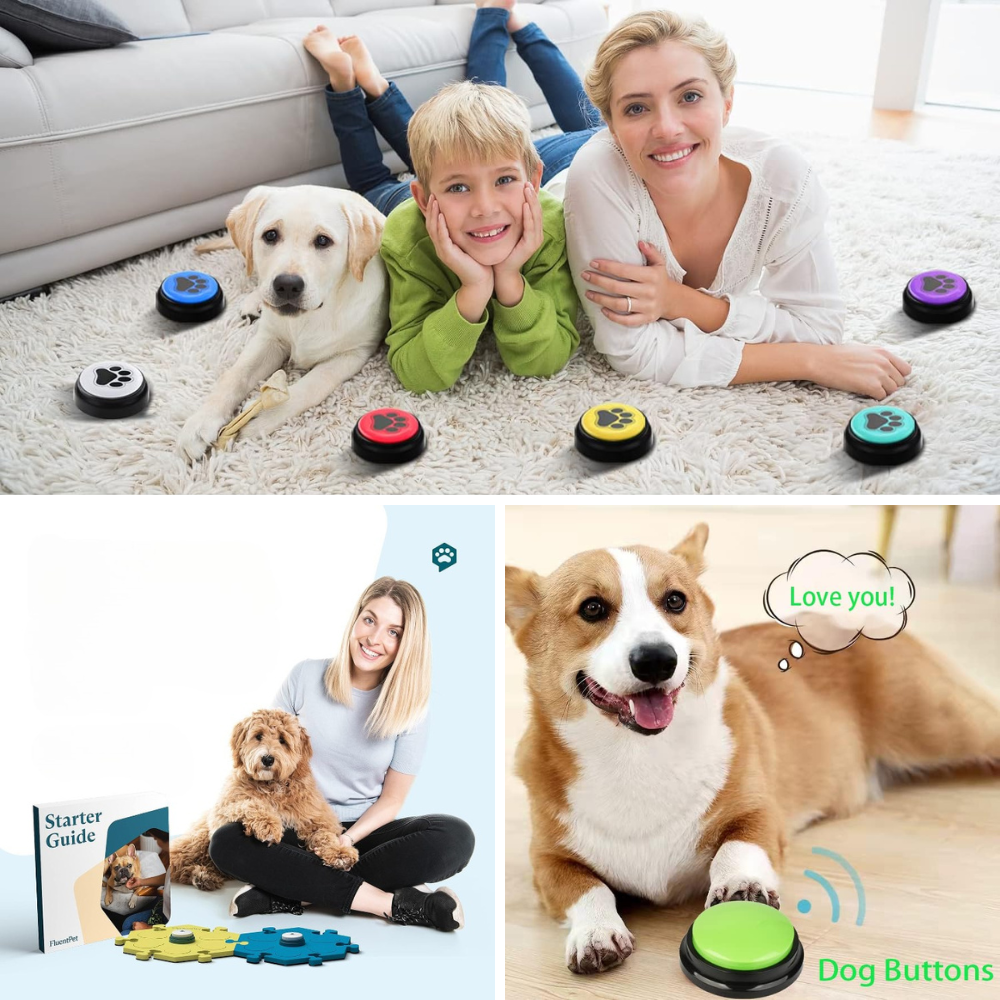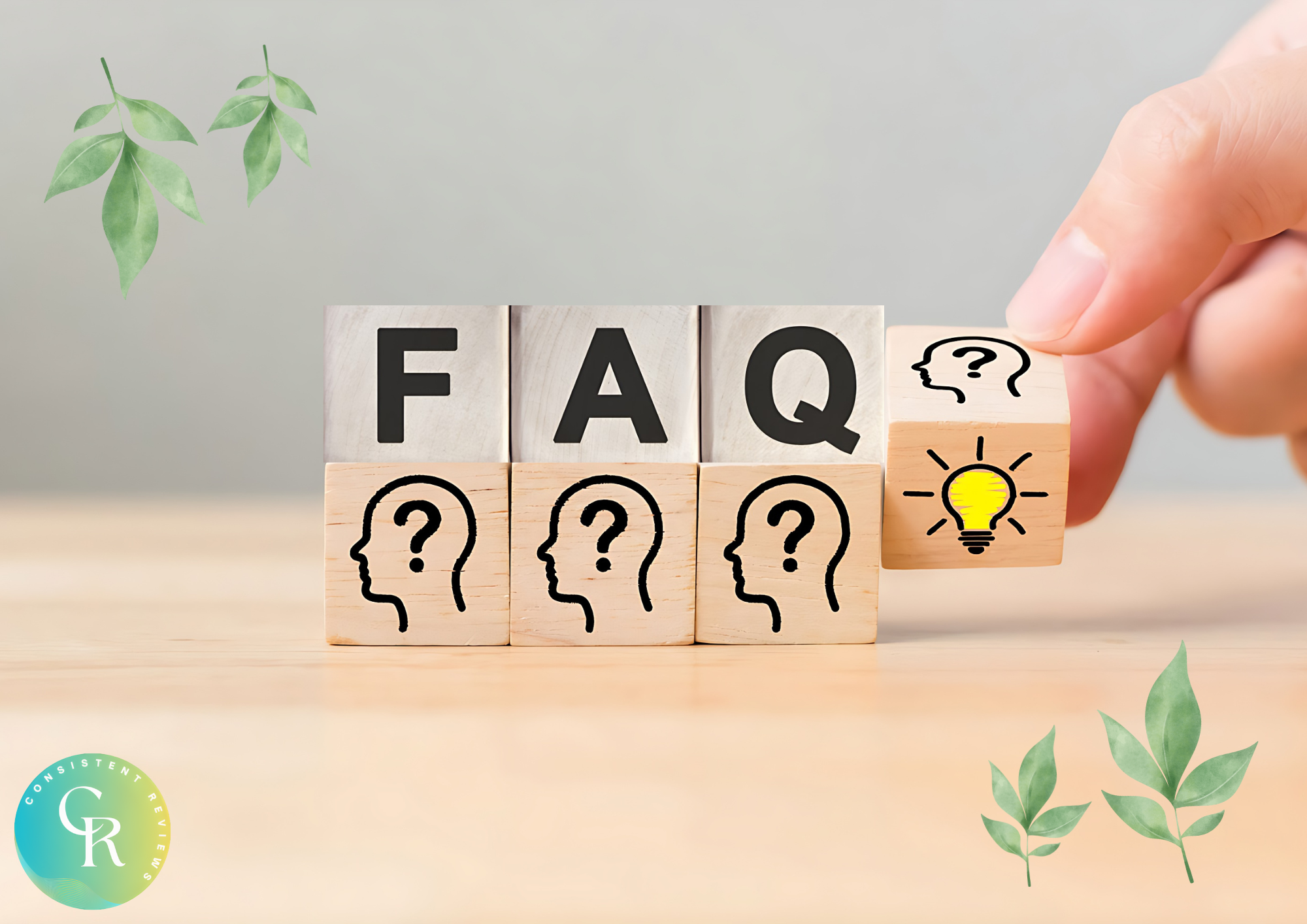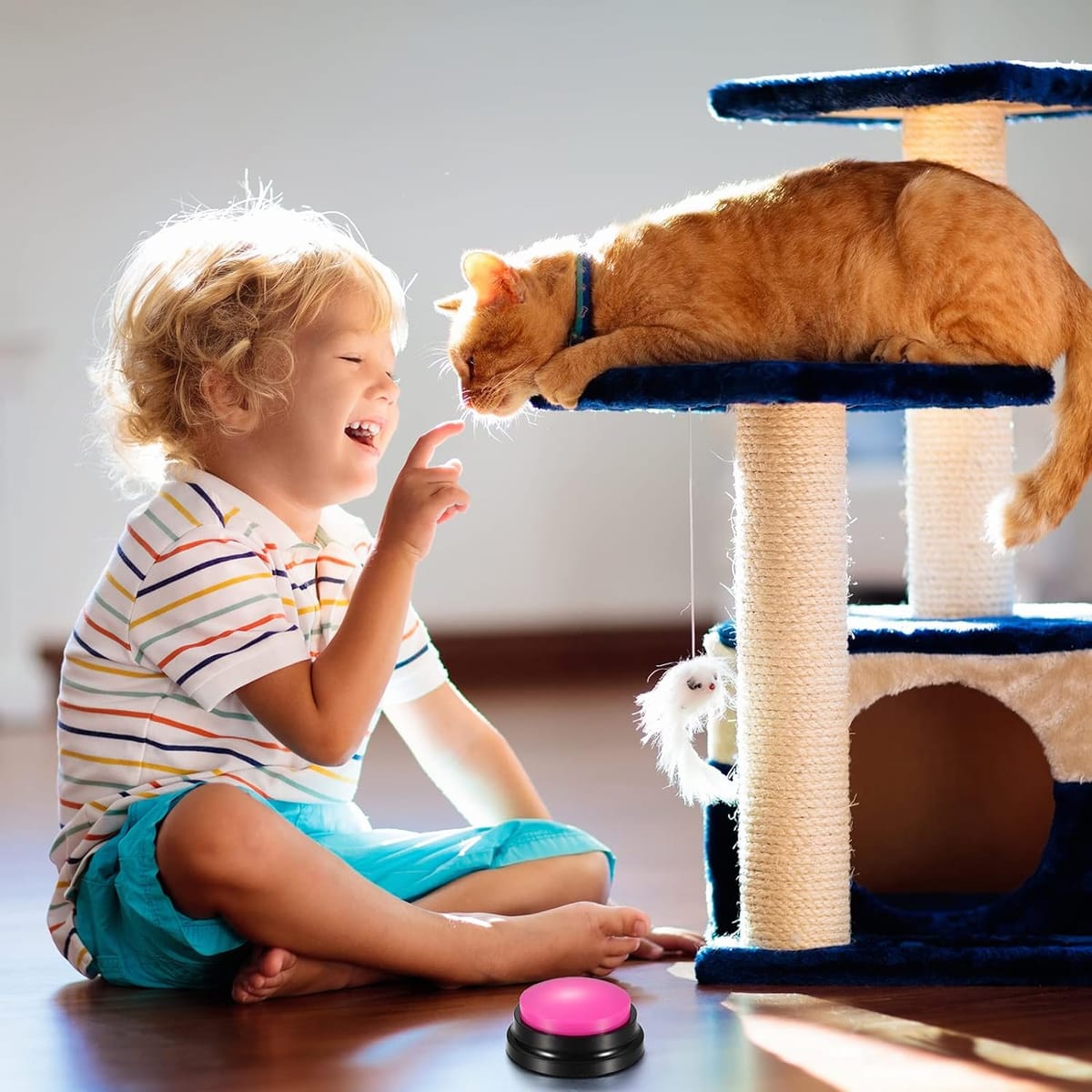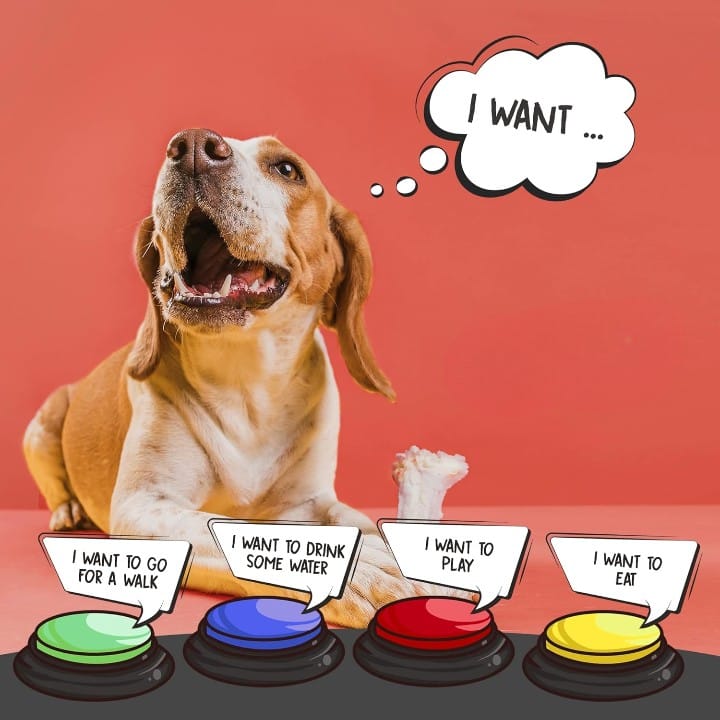Key Takeaways:
- Understand the basics of how to train dogs to use buttons for communication.
- Learn the importance of patience and consistency in the training process.
- Discover practical tips and examples to successfully teach your dog to talk with buttons.
Training dogs to use buttons is a fascinating journey into the world of canine communication. As pet parents, we often wonder what our furry friends are thinking or what they need. With the advent of recordable buttons, this once far-fetched dream is now a reality. This comprehensive guide will walk you through the steps to teach your dog how to communicate using buttons, turning barks and body language into something much closer to human language.
Understanding the Basics of Button Training
Before diving into the training process, it's crucial to understand what button training entails. Speech-language pathologist Christina Hunger, MA, pioneered a method where dogs use a series of recordable buttons, each programmed with a different word, to express their needs and thoughts. This method has opened up a new world of possibilities for dog-human communication.
Choosing the Right Buttons
The first step in training your dog to use buttons is selecting the right ones. Look for recordable buttons that are durable and easy for your dog to press with their paw. These buttons should have clear sound quality and be able to withstand the daily life of an active pup.
Introducing Your Dog to the Buttons
Begin by introducing your dog to just one or two buttons. Choose words that represent something significant in your dog's life, like "walk" or "toy." Place the buttons near the relevant object or area, such as the door for "walk" or the toy box for "toy."
Building Associations
The key to success is building associations between the word and the action or object. Press the button for "walk" every time you open the door to take your dog out. Consistency is crucial, as it helps your dog understand that pressing the button has a specific outcome.
Starting with Simple Words
Start with simple, concrete words that your dog can easily grasp. Words like "water," "food," or "play" are great starting points. As your dog masters these, you can gradually introduce more abstract concepts.
Using Target Training
Target training can be an effective method to teach your dog to press buttons. Use a target stick to guide your dog's paw to the button, rewarding them with treats and praise when they press it correctly.
Paying Attention to Timing
Timing is everything in button training. Press the button at the exact moment the action or object is present. This helps your dog make the connection between the word and its meaning.
Expanding the Vocabulary
As your dog becomes comfortable with the first word, introduce new words one at a time. This gradual approach allows your dog to learn at their own pace without becoming overwhelmed. Enhancing Communication with Pre-Recorded Speech Buttons When teaching your dog to communicate using buttons, pre-recorded speech buttons can be a game-changer. These buttons, when pressed by your dog, emit a word or phrase that you've chosen, such as "outside," "play," or "water." This technology allows non-human animals to express their needs and desires in a way that's understandable to their human companions. For example, if your dog pushes a button that says "water," you'll know it's time to refill their water bowl. This clear form of communication can significantly improve your dog's life, making them feel heard and understood.
The learning process for dogs to use these talking buttons might sound daunting, but many dogs, like the famous talking dog Stella, have shown remarkable success. Stella's owner, Christina Hunger, MA, a speech-language pathologist, has demonstrated how Hunger taught Stella to use over 30 different speech buttons to communicate effectively. By starting with simple, everyday needs and gradually expanding the vocabulary, your average dog can learn to use these buttons on a day-to-day basis. It's a fascinating journey into the world of comparative cognition lab studies, showing that with patience and consistent teaching, pets can learn to interact in ways we once thought impossible.
Tailoring the Button Training to Your Dog's Unique Personality Every dog is an individual, and their learning process for pressing buttons to communicate will vary. Some dogs may take to the buttons quickly, understanding that each button means a specific thing, such as "play" or "walk." Others may need more time to grasp the concept that a button can represent an action or object in their environment. It's crucial to observe your dog's reactions and adapt the training to fit their pace and interests. For instance, if your dog is highly motivated by food, you might start with a button that requests a treat or signifies that it's mealtime.
As you progress, remember that the goal is not just for your dog to press buttons but to use them in a meaningful way. This means ensuring that your dog understands the association between the word buttons and their outcomes. If your dog pushes the same word button repeatedly without context, it may be a sign to revisit the building associations stage of training. Reinforcing the correct use of buttons and celebrating successes, no matter how small will encourage your dog to continue using their new communication tools as part of their day-to-day interactions with you.
Recognizing Your Dog's Communication Style
When embarking on the journey of teaching your dog to use communication buttons, it's crucial to recognize and adapt to your dog's unique communication style. Non-human animals like dogs have their ways of expressing needs and emotions, which can vary greatly from one individual to another. Observing your dog's natural behavior on a day-to-day basis will give you insights into how they might best interact with the buttons. For instance, a more vocal dog might find it easier to associate sounds with the buttons, while a more physical dog might prefer pushing buttons with different parts of their body.
Understanding these nuances is the key to a successful training process. It's not just about teaching your dog to push a button; it's about facilitating a form of expression that feels natural to them. Christina Hunger, MA, a speech-language pathologist, has shown through her work that dogs can communicate complex thoughts with buttons when their communication styles are respected. By paying close attention to your dog's life and their unique ways of interacting with their environment, you can tailor the training to fit their personal communication preferences.
Adjusting Expectations: The Reality of Training Non-Human Animals
When embarking on the journey of teaching your dog to use buttons, it's essential to adjust your expectations. Unlike humans, non-human animals like dogs process and communicate differently. While Christina Hunger, MA, a pioneer in the field of animal communication, has shown remarkable success with her dog, not all pets will pick up the skill with the same ease. It's important to celebrate the small victories and understand that each dog's life is unique, and so will be their learning curve.
Remember, the goal is to enhance your day-to-day basis communication with your furry friend, not to set them up for a performance. Patience is key. Some dogs may only learn a handful of buttons, while others might master a more extensive vocabulary. The success of training should not be measured by the number of words your dog can press but by the quality of interaction and understanding between you and your pet.
Incorporating Pre-Recorded Messages for Clarity
One innovative approach to button training is the use of pre-recorded messages. This method can provide clear and consistent cues for your dog, which is crucial in the early stages of learning. By pressing a button that emits a pre-recorded phrase, your dog begins to associate the sound with the desired action or object. This can be particularly helpful for complex phrases or for reinforcing the dog's buttons training in a busy household where multiple voices may confuse your pet.
Moreover, pre-recorded messages can be a fun way to engage with your dog on a day-to-day basis. Imagine pressing a button as you leave the house that says "I'll be back soon!" and your dog learning to press a button that plays "Welcome home!" upon your return. This not only reinforces the use of the buttons but also strengthens the emotional bond between you and your dog, making the training process both educational and heartwarming.
Integrating Buttons into Daily Routines
To make the most of dog buttons work, it's essential to integrate their use into your dog's day-to-day activities. This means placing the buttons in areas where your dog is likely to use them during regular routines. For example, a 'food' button could be placed near where your dog typically eats, while an 'outside' button might be by the door they use to go out. This strategic placement helps dogs make connections between their daily life experiences and the corresponding buttons, leading to more natural and consistent use.
Moreover, using pre-recorded buttons that emit a specific word when pressed can help your dog understand the cause-and-effect relationship between the button and the desired action. As your dog observes the outcomes of their button pushing, such as the door opening after pressing the 'outside' button, they'll start to grasp how their actions can influence their environment. This understanding is fundamental to their learning process and will encourage them to use the buttons as a reliable tool for communication.
Creating a Button Board
Once your dog is using multiple buttons, create a button board where all the buttons are organized and easily accessible. This will become your dog's "communication station."
Practicing Daily
Incorporate button training into your daily routine. Encourage your dog to use the buttons throughout the day to ask for things they want or need.
Troubleshooting Common Issues
If your dog is struggling, take a step back and simplify the process. Focus on just one word until your dog is confident before adding more buttons.
Celebrating Milestones
Celebrate each new word your dog learns. This positive reinforcement encourages them to continue learning and using the buttons.
Understanding Your Dog's Perspective
Remember that dogs communicate differently than humans. Pay attention to your dog's body language and vocalizations as they learn to use the buttons.
Incorporating Play
Make training fun by incorporating games like playing tug or fetch. Use the buttons during playtime to reinforce their meanings.
Being Patient
Patience is vital in the training process. Every dog learns at a different pace, and it's important to respect your dog's learning style.
Seeking More Resources
If you need additional help, seek out more resources. There are many online communities, books, and videos dedicated to button training.


How long does it take for a dog to learn how to use buttons?
The time it takes for a dog to learn how to use buttons varies greatly depending on the individual dog, the consistency of training, and the complexity of the words being taught. Some dogs may learn their first word in a few days, while others may take weeks. Patience and consistent practice are key.
Can any breed of dog learn to use buttons?
Yes, any breed of dog can learn to use buttons. However, some breeds may have a natural inclination towards learning tasks like this, such as the highly trainable Border Collie. Regardless of breed, with the right training approach, any dog can learn to communicate using buttons.
How many words can a dog learn to communicate with buttons?
The number of words a dog can learn to communicate with buttons is not fixed and can vary widely. Some dogs may learn to use dozens of buttons effectively, while others may use a smaller number. The key is to build the vocabulary gradually and according to the dog's ability to learn and understand new words.

Training your dog to use buttons for communication is a rewarding process that can enhance your bond and understanding of your pet. By starting with simple words, building associations, and practicing consistently, you can teach your dog to express their needs and desires in a whole new way. Remember to be patient, celebrate milestones, and most importantly, enjoy the journey of giving your dog a voice.










